Havanese Dogs

Written by Lucas
Contributions from Nicholas and AlexUPDATED – January 2023

Dr. Alex Wilson
Contributions from Vet Dr. Alex WilsonSmall Contributions made about health.
This is the ultimate guide to the Havanese Dog, everything from breed characteristics to colours, food, toys, training and of course what to watch out for health-wise. We are constantly updating this article, and as always are bringing additional information in from vets, owners, breeders and or course people like you.
Havanese dogs are one of a kind, they are one of those dog breeds that just attract people. If you are here that is because you are looking at getting one, or you are gathering more information about the breed and looking into its characteristics. Here is the table of contents so you can skip to sections that you are most interested in.
- Havanese Dogs
- History of the Havanese
- Havanese Temperament
- Havanese are Smart
- Havanese Upbringing
- Puppy Training and Management
- Havanese with Other Pets, Dogs and Cats
- Havanese Grooming
- Havanese Health – How Does it Do?
- What You Should Know About Breeders
- General Issues that can Affect The Havanese
- What Health Risk Do these Dogs Have?
- Little Dogs Lots of Love
- The Havanese Dog FAQ
- Where Do Havanese Dogs Come From?
- Does the Havanese Breed Bark A Lot?
- How Long do Havanese Dogs Live?
- How Big Do These Dogs Get?
- Havanese Dog Colours
- Do Havanese Puppies Change Colour?
- Naming Your Havanese Dog
- Will My Black Havanese Change Colour?
- What are Some Health Concerns for the Havanese?
- Havanese’s are Great Pets
- Havanese Mixes
- Breeders and Puppies
Are you looking into getting a Havanese?
I recently got married and my wife has a Havanese…so now I do too. Here is a little showcase of our little Nessie.

Havanese Dogs are some of the cutest fluffy companions a person can have. These dogs are hypoallergenic, adorable, affectionate, and have personalities all their own. One of the best small dogs.
History of the Havanese
As the name suggests, this dog breed came from the island of Cuba, specifically from Havana, they have a great history of the Havanese. They were brought to the island by Spanish settlers as companion dogs. Separated from other dogs by their lonely life on the island, Havanese interbred and evolved into the dog we know and love today. They even became the national dog.
Their long silky hair or fur helps insulate them from the fierce tropical sun, yet still remain soft and light. Let’s look more into the history of the Havanese.
Also read – How fast does Havanese Hair Grow?
The blanquito de la habana
The blanquito de la Habana was a name given to the dog which means little white dog of Havana. It was known as the Havana silk dog, because of its long flowing hair. The Havana dog is also allowed to have a number of different haircuts should you wish to keep them more trim.
Although now the little white dog of Havana and the Havana silk dog are both nicknames, they are a great part of their history.
More about the Havanese Dog Breed
These little dogs were the favourite companions of Cuba’s most aristocratic families in the 1800s, and even became the national dog of Cuba. Soon after, Havanese became trendy in Europe.
Unfortunately, the Havanese almost became extinct on the island of Cuba. It was not until the 1959 revolution that the Havanese breed was brought to America, where they thrive today.
It’s rumoured that almost every Havanese in North America can be traced back to the 11 original dogs brought over to the mainland from Cuba. Luckily, the charm and intellect of these dogs are quickly earning them a place as household friends. It is unlikely they will face extinction any time soon.
Havanese are Hypoallergenic
The Havanese breed is hypoallergenic, a term that resonates with many individuals who suffer from allergies.
While no dog is completely hypoallergenic, the Havanese has a hair-like coat, similar to human hair, that continuously grows and doesn’t shed heavily. This quality means that they tend to produce fewer airborne allergens compared to breeds that shed more profusely.
Consequently, many allergy sufferers find they have fewer allergic reactions around Havanese dogs. However, it’s worth noting that dander, saliva, and urine are the primary sources of pet allergens.
Regular grooming, including frequent baths and brushings, can further reduce the amount of dander the dog produces, making the environment even more accommodating for those with sensitivities. It’s always recommended for potential dog owners with allergies to spend time with a Havanese before making a commitment to ensure their reactions are manageable.
Are you looking for a Havanese – Check out our article about the average price of a Havanese
Havanese Temperament
The personality of a Havanese dog is typically mild and caring. They thrive on the companionship of their owner and their family. This means you will often find yourself being chased through the house by your Havanese because it wants to stay with you all the time. They have an extremely loving nature and need love in return. It is not wise to leave your Havanese alone, as they may get depressed and anxious and act out because they’re upset.
Also read – Havanese Personality Issues – Things to know

Havanese are Smart
Havanese are also extremely intelligent. They understand a lot of what’s going on around them, often exploring and sniffing about curiously. They can also be pretty wacky, making you laugh with their oddball personalities and random antics. When they are all out of energy, you can often find a Havanese sitting quietly and watching the world with attentive eyes, almost contemplative. They are certainly aware and smart, and some even say wise.
Havanese Upbringing
A number of things can affect the temperament of a Havanese dog.
How they are trained, what their social structure is, and genetics all play a role in an adult’s developed nature.
When you meet a Havanese puppy and it appears playful, brimming with energy, and healthily curious, chances are it will grow with a positive and friendly temperament. Make sure the puppy seems happy and comfortable in approaching people. Some adopters prefer to pick the middle puppy. This means the puppy that seems the most even-toned, not too rambunctious but not too shy either.
You may not want the highest-energy dog to muck about your house, and you probably don’t want to choose a puppy that’s afraid of the world.
It is highly recommended when adopting that you meet at least one of the puppy’s parents. The mother is preferred and usually, she is the one available. By getting a comfortable glance at the mother and ensuring she has a nice, gentle, and warm temperament, you can be confident the puppy will follow in her footsteps. This rule also applies to the puppy’s brothers and sisters and any other relatives around to meet. If the whole family has a positive temperament, your puppy will be just great when they grow up.
Puppy Training and Management
To make sure your puppy grows into a well-tempered adult, it is important to give them early socialization, multiple times a week.
You must expose your Havanese to a lot of different people from a young age. Bring your friends and family around the house, take the dog for constant walks in different parks and neighbourhoods. Let them be introduced to new dogs and new locations.
You want to really socialize your puppy to the maximum. All the sights, all the sounds, and all the butt-sniffing your Havanese can handle.
This will give the puppy a chance to sprout into a well-rounded and well-behaved dog. Puppy kindergarten classes and dog parks are great options to help develop your pup’s social skills.
Also Read – Potty Training a Havanese with a bell
Havanese with Other Pets, Dogs and Cats
In general Havanese dogs are non-aggressive and will socialize well. They like other dogs, but being a small dog can sometimes get nervous around bigger dogs.
If you already have a dog in your family introducing a Havanese puppy will be relatively straight forward and not a problem.
When it comes to cats, as you know, it really depends on the cat. We have a cat and Nessie gets along fine with her. They are not best friends that cuddle and play together but they are fine in the house without supervision. When introducing a Havanese dog to a cat you may need to take your time and let things developed naturally.
Havanese Grooming
The Havanese, renowned for its flowing, silky coat and expressive eyes, requires consistent grooming to maintain its lustrous appearance and prevent matting. Although these dogs do not shed heavily, their hair continuously grows, much like human hair, making regular brushing crucial. At least two to three times a week, owners should gently brush their Havanese from the skin outward to remove tangles, prevent mats, and distribute the natural oils across the coat.
Furthermore, bathing should be done once every three to four weeks, using a gentle dog shampoo to preserve the coat’s natural sheen. Trimming the hair, especially around the eyes, ears, and paws, can facilitate better vision, reduce ear infections, and prevent slipping.
Keeping their nails clipped, ears cleaned, and teeth brushed rounds out a comprehensive grooming routine that ensures the Havanese remains both healthy and aesthetically pleasing.
The Havanese and Its Many Hair Styles
The Havanese is one of those dog breeds that has multiple colours and multiple haircut styles. In fact, it may have the most.
The Havanese breed is known for its versatile and luxurious coat, which can be styled in various ways to meet the preferences and lifestyles of its owners.
Popular haircuts and styles for the Havanese
- Natural/Long Coat:
- This is the coat as it naturally grows, allowed to reach its full length. It showcases the breed’s characteristic silky, wavy hair.
- Puppy Cut:
- One of the most popular styles for Havanese, the puppy cut involves trimming the hair all over the body to a short, uniform length (usually around 1 to 2 inches). It gives the dog a youthful appearance and is easier to maintain than a long coat.
- Teddy Bear Cut:
- Similar to the puppy cut, but with the face rounded and trimmed to give the dog a “teddy bear” appearance.
- Corded:
- This style allows the hair to mat into cords or “dreads.” It can look similar to the coat of breeds like the Puli or the Komondor. This style requires specific care to maintain and is less common than other styles for Havanese.
- Show Cut:
- For Havanese shown in breed conformation events, there are specific grooming standards to follow. This typically involves letting the coat grow long but keeping it neat, with some trimming around the feet and minor tidying elsewhere.
- Short or Summer Cut:
- The hair is clipped short all over the body, usually shorter than the puppy cut, making it more comfortable for the dog in warmer weather and reducing grooming needs.
- Layered Cut:
- In this style, the coat is layered, giving the appearance of different lengths across the body. This can add some volume and texture to the coat.
- Tassel Style:
- In this unique style, the body is kept relatively short, while specific sections, like the tail or ears, are left longer, forming “tassels.”
- Top Knot:
- While not necessarily a haircut, many Havanese owners pull the hair on the top of the head into a bow or hairband to keep it out of the dog’s eyes, especially if the facial hair is kept long.
- Clean Face Cut:
- The hair on the face is trimmed very short or shaved, while the body hair can be kept at any desired length.
It’s essential to remember that regardless of the chosen style, regular grooming and maintenance are crucial for the Havanese to ensure the health and comfort of the dog. When considering a hairstyle, think about your dog’s comfort, the local climate, and how much time you can dedicate to grooming.
The Havanese and it’s Coat of Many Colours
The Havanese breed boasts a diverse range of colors and markings. Here are the colors a Havanese dog can display:
- Black – and Black and White
- Blue – This is a diluted black and appears as a charcoal or steel gray.
- Silver – Puppies are born black but lighten to silver by the age of 2 years.
- Chocolate – A deep, rich brown.
- Gold
- Cream
- Champagne – Lighter and warmer than silver but darker than cream.
- Fawn
- Red – A rich, deep, orangey tan color.
- Sable – Hairs are multi-colored with dark tips.
- Brindle – Streaks or stripes of dark hair over a lighter base color.
- White – True white, not to be confused with cream.
- Tobiano/Pied – This refers to a mostly white dog with patches of color.
In addition to the solid colors, the Havanese can also have markings, and patterns and these colors can appear in combinations, resulting in a parti-color or tricolor coat.
It’s worth noting that a Havanese puppy’s coat color can change as it matures. For example, a puppy born black might turn silver as it grows older. The diverse range of colors is one of the charming attributes of the breed.
Havanese Health – How Does it Do?
What You Should Know About Breeders
I was a ragdoll breeder for many years and my old in-laws breed boxers and have been doing so for over 20 years. You need to do your research and make sure that you get all of the information that you can. Reputable breeds will give you health information. Havanese dogs are pregnant for about 8-9 weeks, and then the puppies will need 10-12 weeks before they can come to your home.
When It comes to the Havanese here are some guidelines.
- Before individual Havanese can be included in the Canine Health Information Center (CHIC) database, the Havanese Club of America requires them to have a clearance from various registrations. It is really important that you make sure your breeder is registered.
- The Canine Eye Registry Foundation
- Orthopedic Foundation for Animals, PennHIP or OVC for hip and patella evaluations and an
- OFA or GDC clearance for congenital deafness (BAER).
- Conscientious breeders will do additional testing such as SA320 liver shunt and cardiac exams.
- The HSDAA is also a CHIC member and has similar requirements. You can search the OFA and CHIC websites yourself to see if a pup’s parents are listed.
- Breeders must agree to have all test results, positive or negative, published in the CHIC database.
- A dog need not receive good or even passing scores on the evaluations to obtain a CHIC number, so CHIC registration alone is not proof of soundness or absence of disease, but all test results are posted on the CHIC website and can be accessed by anyone who wants to check the health of a puppy’s parents.
- If the breeder tells you she doesn’t need to do those tests because she’s never had problems in her lines and her dogs have been “vet checked,” then you should go find a breeder who is more rigorous about genetic testing.
- Good Breeders screen their dogs. Good breeders only breed the healthiest and best dogs.
Our little Havanese is pretty healthy. We have not had to do too much with her. We do however keep her up to date on her check-ups and watch to make sure everything is ok.
Havanese are generally healthy, but like all breeds, they’re prone to certain health conditions. Not all Havanese will get any or all of these diseases, but it’s important to be aware of them if you’re considering this breed.
General Issues that can Affect The Havanese
When purchasing a puppy make sure that you choose a reputable breeder. Can’t stress that enough. Get someone who will communicate with you and help you along your way.
Breeders also have the health history of their dogs and they will know what things to look out for. Health tests and vet records will prove that a breeder is doing a good job or not. You can confirm health clearances by checking the OFA website (offa.org).
In Havanese, you should expect to see health clearances from the following
- Orthopedic Foundation for Animals (OFA)
- hip dysplasia
- elbow dysplasia
- hypothyroidism
- von Willebrand’s disease
- Auburn University for thrombopathia
- Canine Eye Registry Foundation (CERF) Eyes are certified as normal.
What Health Risk Do these Dogs Have?
- Hip Dysplasia
- This disease is common in a lot of fo dog breeds. It is a genetic disease, and it can be screened for. Even still it can show up in puppies from cleared parents. Typically treatments include medication, weight management, special nutrition and sometimes surgery.
- Elbow Dysplasia
- This is similar to hip dysplasia believed to be caused by abnormal growth and development of the elbow in dogs. The elbow joint gets weak and can be malformed. Treatment is the same as for the hip
- Chondrodysplasia
- This is also known as dwarfism, and affected dogs have short limbs against the average for the breed. It will often lead to crippling. Sometimes less severe dogs can be ok but they should never breed.
- Legg-Calve-Perthes Disease
- This disease is a deformity of the hip ball joint. The head of the femur bone gets less blood and eventually, the bone dies off and becomes deformed. The result is arthritis or inflammation of the hip joint. It is not well known what causes this disease but should be something that you look out for. Dogs generally do well after the surgery, and many suffer only minor lameness, particularly during weather changes.
- Cataracts
- Cataracts are well known in the animal world. I have an old cat that has them. It causes a loss of vision on the lens of the eye. It usually makes the eye look cloudy. It is an inherited disease and typically occurs with old age, although it can occur younger too. Surgery can be used as a treatment.
- Deafness
- Havanese are susceptible to some eye and ear issues. Some of the forms of deafness can be treated with surgery, and with medication. Sometimes dogs are not so lucky. Pet owners have to be patient and caring when this happens. Products like vibrating collars can make things more manageable.
- Congenital deafness is screened for with the BAER test, but there is no treatment. However, dogs adapt better to deafness than people do. They can be trained to respond to hand signals.
- luxating patellas (Patellar Luxation)
- Trick knee. Patellar luxation is a common problem in smaller dogs, and it is caused when the knee structure is not properly lined up. It can cause lameness or a weird walk. Treatment for this is usually surgery.
- Portosystemic Shunt
- Basically these means that the blood is not being filtered by the liver correctly and some of those toxins are free to travel around the body. This typically leads to other issues because of that. A change in diet and strict nutrition can help, and surgery can help too.
- Heart Murmur
- Heart murmurs are changes in the blood flow and are rated on a scale of 1 – 5. Medication, diet and surgery can help.
- Mitral Valve Insufficiency
- This is a kind of heart disease connected to the valves in the heart. It can be treated with medication, diet and exercise restrictions.
Little Dogs Lots of Love
Havanese are love dogs. This dog breed is incredible. They are also part of the bichon family of dogs.
These fluffy little canines are passionate and incredibly friendly. Not only to their family but to everyone. Havanese are great with children, with strangers, other dogs, and they even like cats. If you choose to adopt a puppy, you should know beforehand that these dogs are huge attention seekers. They will give you a lot of love, but they need a lot of love in return. They don’t have a super high energy level but they do need to burn off some steam.
The Havanese is very eager to please, and you will find it very easy to build a relationship with them, they are not one of those aloof dog breeds.
Can You Leave Them Alone
We leave Nessie at home alone for most of the day during the workweek and she is fine. She doesn’t get into things or chew on the furniture. There are also days that she goes to work with mom and really enjoys that. Havanese really do like people.
We wouldn’t lock her in a pen or leave her in the yard all day while we are at work. She does love lots of time outside in the backyard but she will rarely stay out there by herself for hours on end.
The Havanese dog breed really is a house dog, and they prefer to be near their owner. They shouldn’t be left alone for long periods of time, as some other dog breeds can.
They can get anxious when left alone, even depressed without the love and affection of someone, preferably their owner. For this reason, make sure you have enough time to dedicate to your new furry friend before you adopt. A Havanese will be incredibly loyal and shouldn’t be neglected or re-adopted.
The Havanese dog breed does like to play as well, so it is important to let them use some of their energy up during the day. The Havanese dog breed is also one of those dog breeds that gets what we call the zoomies, just meaning that they can get excited and run at top speed in circles wanting to play and have fun. This is generally true of the bichon family of dogs.
Companion Dogs, Work Dogs and Training
As a companion dog, you can’t do better than a Havanese. There is a reason the old aristocrats in Cuba loved these dogs to warm their laps and follow them around. They are extremely personable and friendly. However, Havanese have more to offer than just their warm personalities. Some people say these dogs have empathetic qualities. They work fabulously well as therapy dogs, forming lifelong bonds with their owners. They are wonderful companions for the elderly, for young children, or for anyone else who needs a cute little friend. These loyal dogs will be a loving four-legged companions your entire life.
Interestingly enough, Havanese are also good work dogs, able to find mould and termite infestations inside houses. They are even great performing dogs. Because Havanese are so well-trained, they can perform in silly shows and do tricks. You might consider a Havanese as a competition dog. This is thanks to their huge energy output.
Even though Havanese are small, only between seven and thirteen pounds, they have oodles of energy to spare. This makes them excellent in competitive sports that involve speed, agility, and obedience. They’ll certainly be able to keep up with a wild youngster around the house.
Do keep in mind that even though the Havanese is cute, tiny, and obedient, you shouldn’t let it overindulge in bad habits. You don’t want to start feeding your Havanese French fries or you might be in trouble. It will adopt habitual behaviour quickly and start manipulating you. Be sure to keep this quirky furball well-behaved and cared for. You will find the Havanese a perfectly loveable pet.
The Havanese Dog FAQ
Where Do Havanese Dogs Come From?
Originally Havanese were brought to Cuba by Spanish settlers who didn’t want to leave their dogs at home. The name Havana became quickly associated with this little dog, hence their name – the Havanese.
Even though these dogs are known to come from Cuba, they are now recognized as a breed and bred throughout the world. There is definitely a concentration in North America. If you are looking for a Havanese puppy in Canada Check out our Havanese Breeders Canada page. If you are looking for one in the USA we also have a Havanese Breeders in the USA page.
Does the Havanese Breed Bark A Lot?

People often assume all small dogs are little yappers. We have a whole support article on this topic click here.
This is probably all the chihuahua’s fault. People see a little dog and immediately think it is a yipper like the shrill barking chihuahua.
However, Havanese don’t follow this trend. Thanks to their surprisingly calm demeanour and eagerness to please their owners, Havanese are super quiet. They almost never bark. They don’t grumble, growl, mutter, or even whine. Of course, this can depend on their training and discipline. They benefit from walks multiple times a week, they have a great energy level.
How Long do Havanese Dogs Live?
The maximum lifespan of a Havanese dog is generally 15 years. That said, there are a lot of variables that go into how long your little Havanese will live. While we would all like our dogs to live their longest lives, it isn’t always possible. If you want your Havanese to live to see 15 birthdays, care should be your top concern. You want to take the best care of your dog as possible. Many common health problems are easily avoidable, like excess weight. You can seriously diminish the lifespan of your dog by feeding it too much and letting it get chunky. This means the right diet for your Havanese. Feed it properly and make changes if it starts packing on the pounds.
Exercise is another great way to keep your Havanese spry and healthy. If possible, take your dog to the park every day or go for a walk around the block. Because Havanese have such jolly temperaments and high energies, they are more than happy to play games, go for long walks in the forest, or do doggie exercises. It is crucial to keep your dog moving and active. Like humans, movement plays a critical role in the health of a Havanese dog.
Regular check-ins at the vet are also a good idea if you want your Havanese to live fifteen full and happy years. Sometimes diseases can creep into the dog’s body undetected and unbeknownst to you. It is important to see the vet every year or so and check for sneaky diseases that can hurt your dog in the future. Most are easily treated if found early. Not only will this save you a monster veterinary bill later on, but it will keep your Havanese healthy for life. Vaccinations are super important too. You want all the dog’s shots to be current and effective. Sometimes viruses and bacteria can spread from dog-to-dog or human-to-dog, and you definitely want your Havanese to be protected.
A final word on health – make sure your dog is as comfortable as can be. Your dog is your friend, and you always want your friends to be cozy and happy. If you leave your Havanese alone or bully the poor little thing, it will become stressed and anxious. Stress and anxiety lead swiftly to health problems. The happier your dog, the longer it will live. A great thing you can do is make sure your Havanese has some comfortable spots inside your home where they can relax and feel safe. This is absolutely crucial to extending your dog’s life.

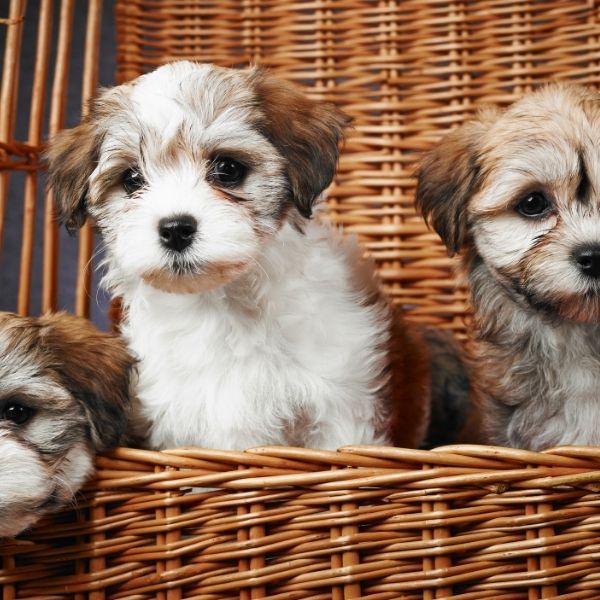
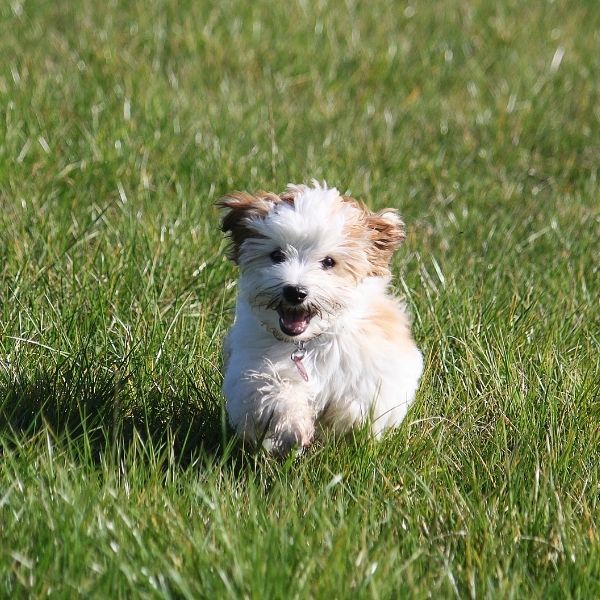
How Big Do These Dogs Get?
Havanese puppies grow quickly. In fact, a Havanese will grow to its full size by only 18 months. Some pups may be different, growing fully by 12 months or anywhere between. The best way to determine when the puppy will grow to adulthood is by looking at its parents and grandparents. The bloodline always tells the clearest story.
Also Read – How Big do Havanese Dogs Get?
Havanese are small dogs, in the “toy dog” category. They never get too big that they can’t take a nap in your lap. That’s one of the things that is so adorable about these little dogs.
They get roughly between 8.5 and 11.5 inches tall once they are fully grown. (inches weight) Their proportionate adult weight is between eight and thirteen pounds. This is small enough to pack around in your arms like an oversized baby with fur. And while Havanese is fully grown by around two years old, they probably won’t be doing much growing after the first year. If they do, it will be minimal.
If your dog is a little underweight you can try changing the food to add a little more calories.
The Havanese breed also comes in a variety of hairstyles. Longer hair makes the dog look a little bigger, and shorter styles make them look a little leaner. Being from the Bichon family of dogs, the main difference for the Havanese from the Bichon Frise is that they are a little smaller and a little lighter.
Havanese Dog Colours
Havanese are cute fluffy dogs that come in a wide variety of colours, and their outer coat is awesome. In fact, they come in more colours than almost any other breed. Their silky coats can be blue, silver, sable, gold, red, brindle, black, chocolate, cream, white, and champagne. What makes the Havanese truly stand out amongst the other breeds of dog is their huge variation in shades and patterns. They can be gold with touches of red, white with little hints of cream.
It is really incredible.
The outer coat colours of the Havanese breed range so much that people often assume they are different breeds of dogs. The combination of colours and hues is almost infinite for these amazing pups.
Because of the Havanese’s incredible variety of possible coat colours, it is nearly impossible to predict which colour the puppies will be. Even if the mother and father are white, the babies can all come out of different colours or combinations of colours.
Two golden Havanese parents can have a brood of six black Havanese puppies. These are truly the chameleons of the dog world.
The Havanese colour conundrum has to do a lot with colour genes. There is a minimum of 10 drastically different genes that determine what colour or shade a Havanese coat will be. There are genes that manipulate pigments and genes that manipulate the placement of pigments. What this means is that every Havanese born will have a slightly different pigment structure, resulting in their beautiful colour contrasts. Even jet black Havanese may have slightly different tones on different spots of their body. Everything about these dogs is fantastically unique.


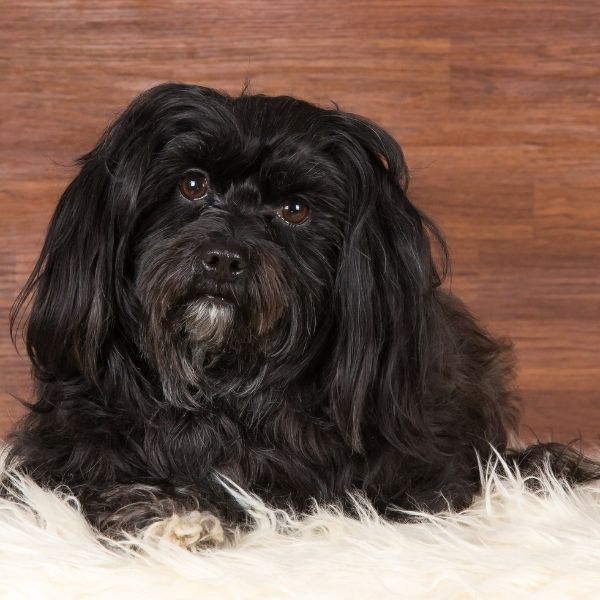
Do Havanese Puppies Change Colour?
Havanese puppies, born in such wildly contrasting colours, do often change as they grow older. Their outer coat colour morphs.
There are modifier genes inside their little puppy DNA that will cause them to change colour over time. This can be drastic or gentle or not happen at all. It sometimes seems totally random. Their colour may lighten or turn dark, or their markings may change slightly. There is often no way to know what the final colour of your Havanese puppy will be until they grow into it.
Still, there are a few tells that can help you determine what your pup will turn into down the road. As a general rule, Havanese that is light in colour will often not change at all. If your puppy is white, chances are it will stay white. If your dog has one colour and a little white, the white part could blossom flecks of colouring throughout it.
This is referred to as ‘ticking.’ Sable changes the most. The dark hairs will almost never grow back once they are cut. So, even if the puppy begins life dark, it will gradually get lighter into adulthood. Also, your Havanese coat will likely get softer as it gets older. The result will be sparse dark tips, maybe on the tail or ears, with a lighter adult coat. Almost all the colours will gradually soften.
Confusingly enough, Havanese can alternate. They may be dark, then light, then dark again. Even their banding can grow colour from seemingly nowhere. It all depends on what kinds of genes they have. Either way, you will be sure to have a fun time taking lifeline photos of your changing Havanese dog.
Also Read – What’s Better a Female or a Male Havanese?
Naming Your Havanese Dog
When you get a new Havanese or any dog for that matter you usually need to pick a name for the pup or new dog (if it is a rescue and doesn’t have a name). We have a number of suggestions on our Havanese name article for you to check out.
Will My Black Havanese Change Colour?
People are fascinated with the Havanese and the dog’s huge rainbow scheme of colours. We know the puppies can change as they grow old. We know markings can lighten or darken, that ticking can occur, flecking a dog’s coat with splotches of light or dark. We also know that Havanese can switch from light to dark and back again. One question people are always asking is, “Will my black Havanese change colour?” The answer is… maybe?
If your puppy is black, it might very well stay black for the rest of its life. It might never change at all, not a shade nor a hue. At the same time, your black Havanese might change and change back. It all depends on the genes, making it really difficult to know for sure. But yes, it is possible. There have been instances of a puppy born black, changing to silver after one year, and three years later being a charcoal colour. Havanese puppies are really that diverse. However, if your Havanese dog is black at twelve months, it probably won’t turn pearl white any time soon.
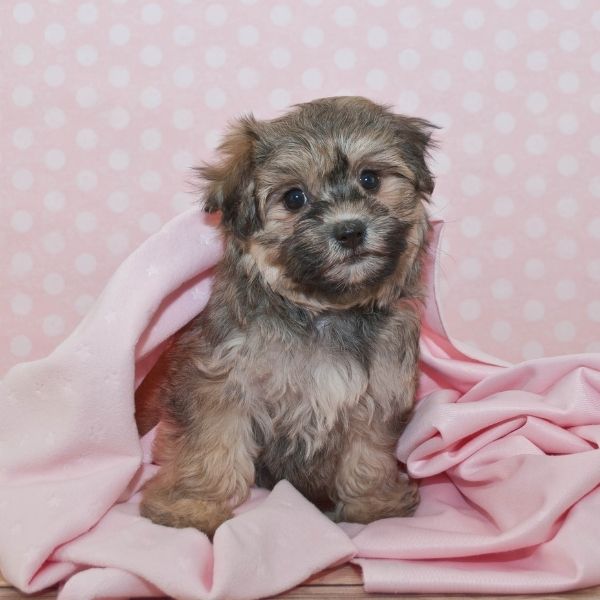
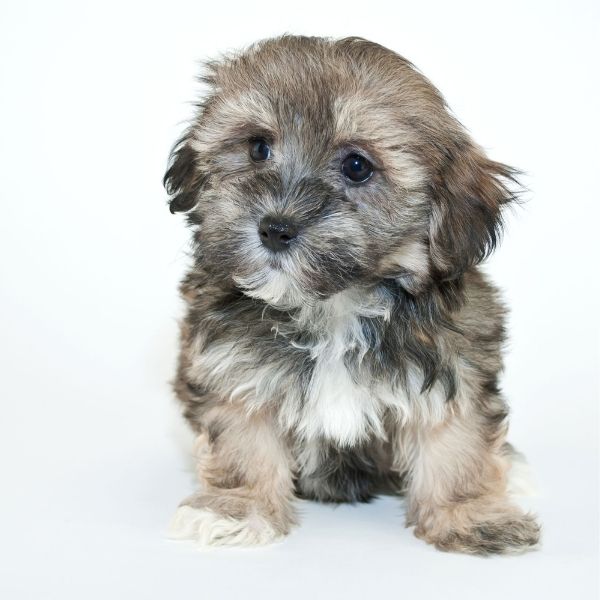
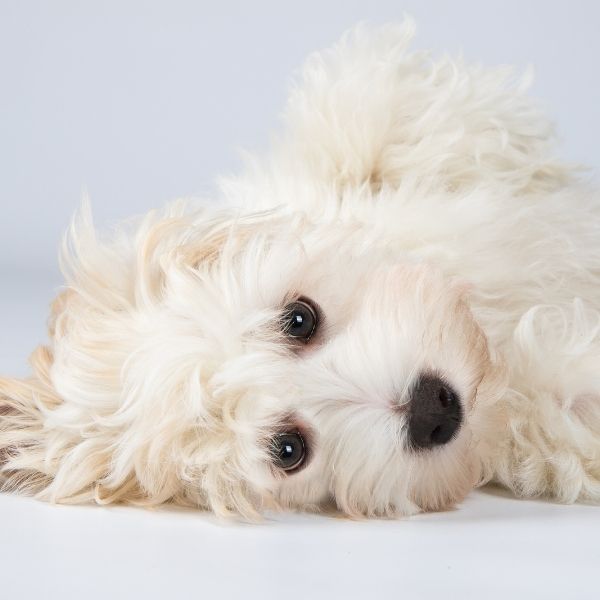
What are Some Health Concerns for the Havanese?
There are a number of things that you need to consider when thinking about a Havanese dog. We have a number of articles that will help you with more information.
- When does a Havanese Puppy lose its teeth?
- When do Havanese Dogs’ growth plates close?
- What Do Havanese Dogs Die From?
- What are Havanese Bred For?
Havanese’s are Great Pets
Not only do these little guys not shed, but these animals are truly miraculous. Because they don’t shed and are hypoallergenic they also don’t really smell. Now if you get them wet and don’t groom or look after them they can smell, but in general, they don’t really have that dog smell.
The Havanese breed is good-spirited, loyal, fun, and amazing to have as pets. However, Havanese are more like members of your family than just dogs. They are lovable and forever attached to their owners. If you are considering adopting a puppy from the Havanese breed, please ensure you have the time needed to dedicate to its care and wellbeing. These are not large dogs that can be left barking in the yard all day in the winter while you go to work. You really must put some thought into your decision before committing to a Havanese dog. Remember, they can live to be fifteen years old. These affectionate animals are not the type to be “gifted” to someone else at ten years old. It is not fair to them.
Whatever you do, take good care of your puppy and treat them with respect and love. If you do, the Havanese dog will be your best friend for life. They are constantly changing, always friendly, and are playful companions great for seniors, young people, and everyone in-between. The whole family will love watching the Havanese changing colours and growing into happy dogs. They don’t bark too much, they don’t have a heap of inherent medical conditions, and they are great with babies and other animals. If you’re looking for a new addition to your family, maybe to grow alongside a new baby, look no further than the Havanese.
Havanese Mixes
This is about the Havanese dog, but we also wanted to mention that a lot of people are breeding the Havanese with other dogs to pass on the Havanese hypoallergenic traits.
Some of the examples of this are the Havapoo, the Havamalt and the Havaco.
Also check out our other Havanese mixes.
Also Read – What is a Teacup Havanese
Sources
The American Kennel Club – AKC.org The club is one of the authorities on dog breeds and other issues in the dog space. The American Kennel Club also has a lot of information about the breed, and general information about dogs and how to look after them. The American Kennel Club also has the established breed characteristics and standards listed. The American Kennel Club Website, a national breed club.
Havana silk dog – The Havana Silk Dog Association of America (Havana Silk Dog)
Additional resources
Breeders and Puppies
If you are looking for breeders and puppies, we have a number of resources that will help you. Our breeders and puppies page is a good place to start. You will find local pages like puppies in Texas.
